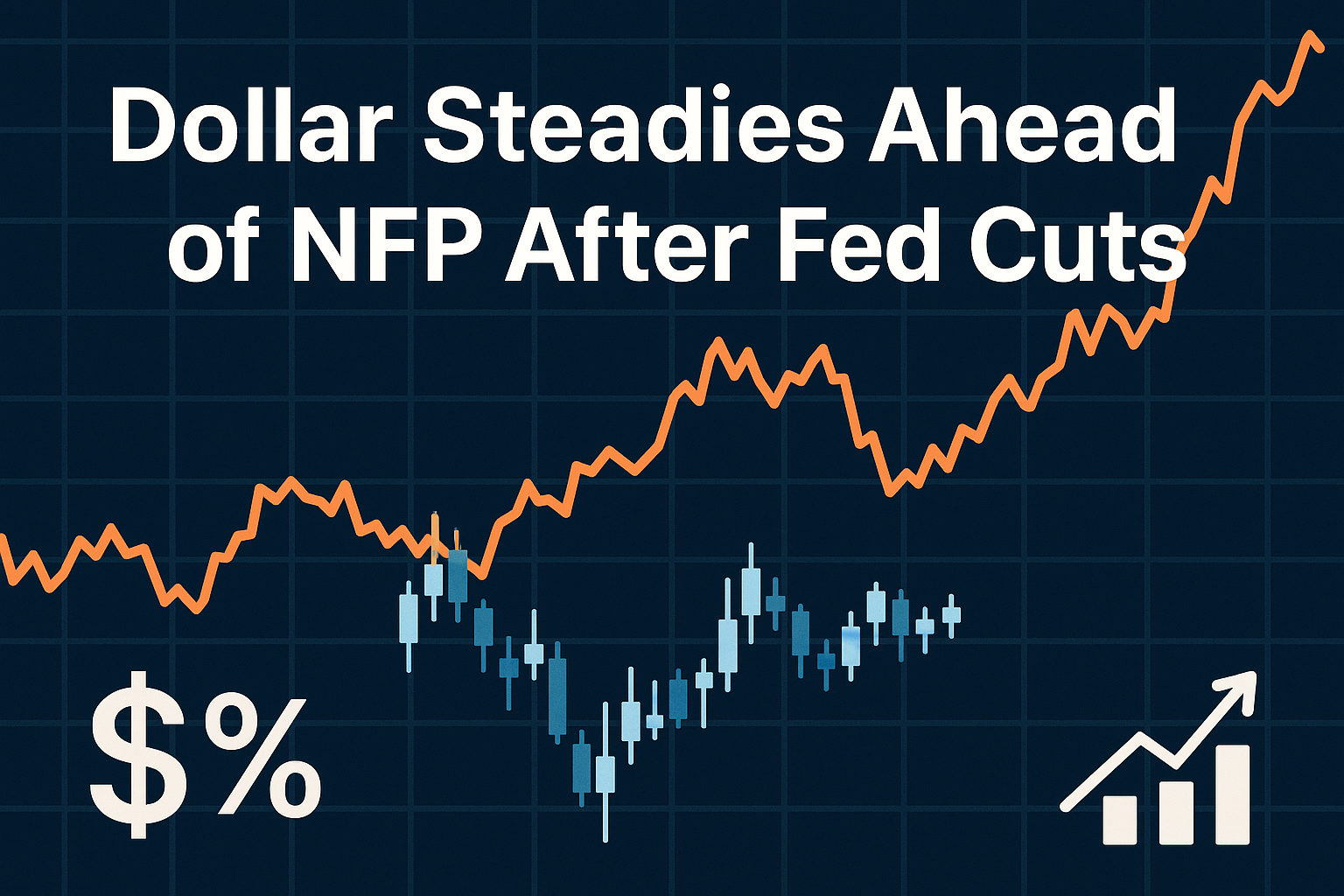The US dollar steadied in thin Monday trade as investors positioned for this week’s labor data after the Federal Reserve delivered consecutive quarter-point rate cuts in September and October. With markets weighing the path of policy and growth, Friday’s Non-Farm Payrolls will be the next catalyst.
Key Highlights
- Fed cut rates twice into October; policy now at 3.75%–4.00% after back-to-back 25 bp moves.
- Friday’s NFP (Nov 7) is the key event, with attention on jobs growth and wages after a large benchmark revision.
- Dollar momentum mixed as traders balance easing policy against still-tight labor conditions and Treasury supply.
Fed Cuts Twice; Debate Shifts From “If” to “How Far”
The Federal Reserve lowered the federal funds target range again in October to 3.75%–4.00%, following a September reduction—bringing borrowing costs to their lowest since 2022. Markets now debate how far and how fast the easing cycle can run without re-igniting inflation, with the FOMC calendar and statement cadence under the microscope as the Fed transitions from restrictive to less-restrictive settings. The shift mirrors a cooling inflation trend and a gradual loss of labor-market heat, but the Fed has kept a meeting-by-meeting, data-dependent tone.

NFP in the Spotlight After Big Benchmark Revision
Friday’s Non-Farm Payrolls (Nov 7) is the marquee event risk for FX. The August benchmark revision showed a –911,000 downshift to total nonfarm employment, reminding traders that the labor market may have less underlying strength than headline prints suggested through mid-year. For the dollar, the mix of payrolls, unemployment rate, and average hourly earnings will matter as much as the headline change: softer wages would reinforce the disinflation narrative and keep rate-cut hopes alive into year-end. Conversely, a resilient report could steady Treasury yields and lend the dollar a bid.
Can the Dollar Hold Its Ground?
Positioning is now a tug-of-war between lower policy rates and still-elevated real yields, with supply dynamics (Treasury issuance) and risk appetite adding cross-currents. The dollar’s trade-weighted tone has been choppy rather than one-way, reflecting a world in which the Fed is easing but not racing to the bottom, and where other majors face their own growth and policy headwinds. The upcoming FOMC minutes and data flow will inform whether the market prices a longer run of cuts into early 2026 or a pause after December.
What to Watch Next
- NFP and wages (Nov 7) for confirmation of cooling momentum.
- FOMC communications for tolerance toward further easing.
- Risk sentiment via equities and credit; strong risk-on could cap USD even if NFP is firm.
Bottom Line: The dollar’s next leg hinges on labor and wage data. A benign NFP could extend the drift lower in yields and keep USD range-bound to softer; a sturdy report risks reviving the “higher real yields for longer” theme and a USD bounce into mid-November.
